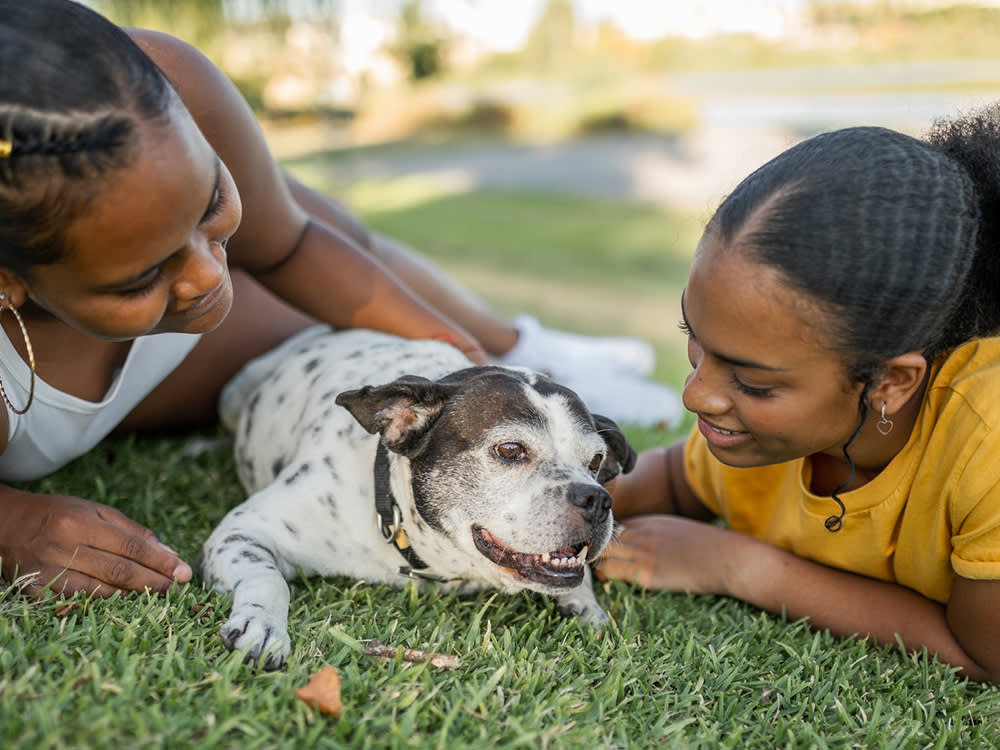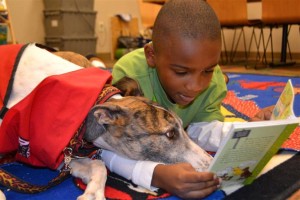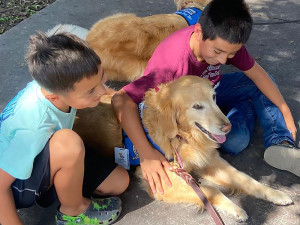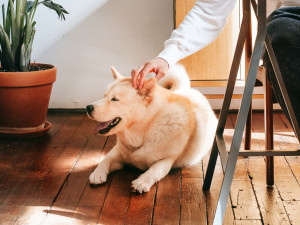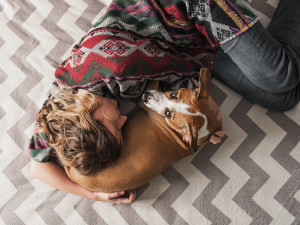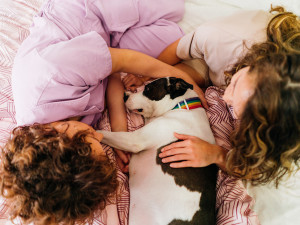Therapy Dogs Can Help You With Your ADHD
Happy news: Pups can help support your (or your kid’s) everyday needs.
In recent years, with the help of TikTokopens in new tab and a general ease of the stigma around mental health, we are finally talking about Attention Deficit/Hyperactivity Disorder (ADHD). The days of feeling like the odd one out in the classroom or being called hurtful (and uncreative!) names like “space case” are hopefully behind us as disability advocates continue to educate schools and workplaces on accommodating their neurodiverse students and colleagues. Plus — bonus: It turns out dogs can support the needs of folks with ADHD.
Concerned about the lack of treatment for those living with ADHD, researchers studied the positive effects of therapy dogs on children with the disorder. Although therapy dogs have been used to help kids with ADHD for a long time, this study is the first randomized experiment to document the effects people have been anecdotally reporting for years. Here’s what researchers learned about how therapy dogs effectively reduce symptoms of this disorder in children.
Save on the litter with color-changing tech that helps you better care for your cat.
How do therapy dogs help children with ADHD?
Catecholamines are important in stress responses. Children with ADHD may suffer from abnormal physiological factors in the catecholamine system, especially dopamine receptors and transporters, and the genes that are necessary to convert it to norepinephrine. The result of these abnormalities is decreased motivation and reduced emotions, which can lead to inattention and disinterest in social interactions as well as in the learning process.
If this “Motivational Hypothesis” is true, then interacting with dogs may help these kids by heightening their arousal and emotional states and leading to increased attention and interest in the environment in which therapy takes place. It’s also possible that the opportunity to interact with a therapy dog motivates children to comply with the requirements of therapy and to engage with the therapist.
Dogs increase the odds of improvement.
The kids in the study were all seven to nine years old and none of them had ever taken medication for ADHD. All of the kids were treated according to long-established best practices in the field of psychosocial intervention. Half the kids were randomly assigned to a group that also received Canine Assisted Intervention (CAI) — treated with a therapy dog. They were able to interact twice weekly with therapy dogs, reading to them and teaching them new behaviors. The kids who did not work with a therapy dog read to realistic dog puppets and taught other children specific skills.
Children in both groups showed improvement in their ADHD symptoms, but standard psychosocial intervention combined with therapy-dog work was more effective than psychosocial intervention alone. Specifically, the kids who interacted with therapy dogs had greater improvement in social skills and attention than kids whose treatment did not include dogs. They also had fewer behavior problems than the kids receiving standard treatment without dogs, and they showed positive improvements earlier in the study than the group of kids who did not interact with dogs. There were no differences found between the groups in terms of their hyperactivity and impulsivity.
The future of ADHD treatment options.
There is a big push to develop and study new therapies to treat ADHD that do not involve medication. Many parents are hesitant to use medication with their children and typically only use it for one to three years. There is a strong possibility that many parents will be more open to therapy dog work than to using a medication, so treatments with dogs could result in higher long-term compliance.
This study showed that therapy with dogs improved some symptoms of ADHD but not others, so it is likely that multiple treatment types are needed to target the full range of symptoms. There is still much to learn about the best way to incorporate therapy dogs into the treatment of kids with ADHD, but — thankfully — the future of neurodiversity looks a lot brighter (and cuter) with these furry pals in the mix.
